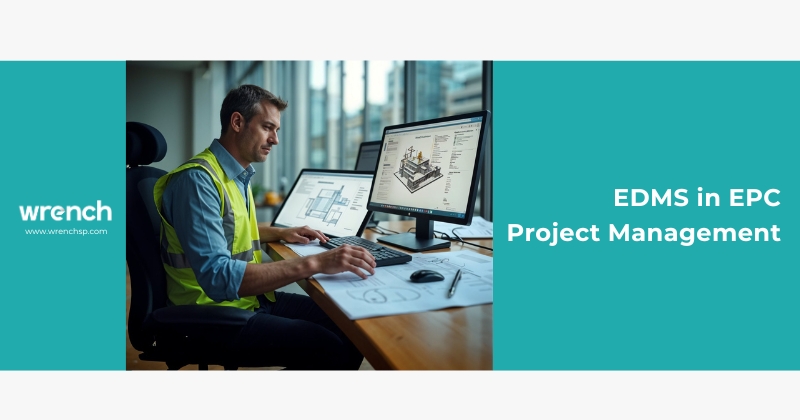EDMS has become popular in the EPC world in the last decade, especially after the pandemic. What is EDMS? At its core, EDMS is an electronic document management system or a software that organises and stores electronic data – that is the basic definition. But EDMS today has become a lot more; in fact it is a specialised software solution for the EPC industry.
If you break it down from a software perspective, an EDMS can be compared to an electronic filing cabinet which offers assistance in retrieval and storage of the files; ie it is an intelligent filing cabinet that sorts and rearranges and updates its own files. To a point, the analogy works but only to a point; in the last few years EDMS has gone far beyond the filing cabinet and plays an active role in project management. No longer is it used for storage, rather, it actively executes processes around the creating, saving, and retrieving of digital files and helps manage project data in a collaborative space. EDMS drives work forward amongst its users by way of inbuilt workflows, so you could say the paradigm has flipped – instead of workers using EDMS to accomplish tasks according to a workflow, EDMS makes workers follow the workflow and complete the task.
EDMS can deal with practically all the file and data types organisation use nowadays, including text, images, video, pdfs, CAD, and even audio files. EDMs can integrate with drone technology to capture ‘live’ information directly from the work site. EDMS integrates with other applications used in the organisation so that centralised information can be accessed and managed more efficiently by everyone. In short EDMS has gone from a data management system that makes digital files easy to manage to an engineering process management tool that makes engineering deliverables easy to deliver. Indeed today’s EDMS is not just about document management, it is an integral part of successful project management, and as such, can be considered a part of an EPC organisation’s operations infrastructure.
For organisations involved in EPC, like project owners, contractors, PMC, or architects, EDMS is an indispensable system, much as CAD was a few decades ago.
For EPC organisations embarking on a journey of digital transformation, EDMS is the first step and a much-needed move away from the manually-driven and effort-intensive methods of the past.
Today’s EDMS impacts a project’s final outcome by changing the way the project’s lifeblood ie its engineering documents and drawings are managed and organised, and it does so more efficiently and cost-effectively than any other method could hope to do, and that includes the slew of generic data, document, and content management solutions that have entered the market in the past decade. Choosing an EDMS – or indeed deciding if you need one – is no easy task. There’s a lot of options to choose from and an ever-increasing list of features and functions and customisations and you’ll need to accurately assess your requirements, the scope and complexity of your operations, and your budget before narrowing down the set of features you think you’ll need.
With EDMS becoming so popular and so many options entering the market, some categorise EDMS into three types: Server-based, Cloud-based, and Web-based depending on the client’s preference and operational structure. Server-based EDMS needs to be installed on each computer, with files stored on a server and accessed through local networks. These are also referred to as on-premises systems. Cloud-based EDMS is hosted on the cloud and files are transferred via the internet. Such systems offer benefits like large file transfers but can cause concerns about security in organisations accustomed to on-premises systems. The third type, web-based EDMS, is a cloud-based system that can be accessed directly from a browser without any intervening software, and this makes them inexpensive and convenient, if somewhat limited in features. In recent years, and especially after the pandemic which revolutionised the way companies worked, server-based EDMS has almost vanished from the scene, and cloud and/or web-based EDMS is becoming the norm.
The modern EDMS presents significant advantages over other data storage and organisational software. In mission-critical areas of project execution like decision-making, compliance & quality management, risk management, manpower and resource management, and trust-building amongst stakeholders, EDMS is a one-stop solution, single-handedly managing the storage, categorisation, security, and sharing of engineering deliverables across users, versions, and locations and furnishing project managers with a common work platform that allows them to complete work on time and on budget and with quality.
Ultimately, an EDMS becomes the Single Source of Truth for project documentation, helping teams meet compliance and quality goals, streamlining collaboration across internal and outside groups, and enforcing accountability at every level. You could think of EDMS as an advanced workflow-driven engine controlling the functioning of a secure project database or as an advanced database with built-in workflows and control mechanisms; either way, it’s a built-for-purpose engineering data management system that replaces manual methods of data storage and management.
